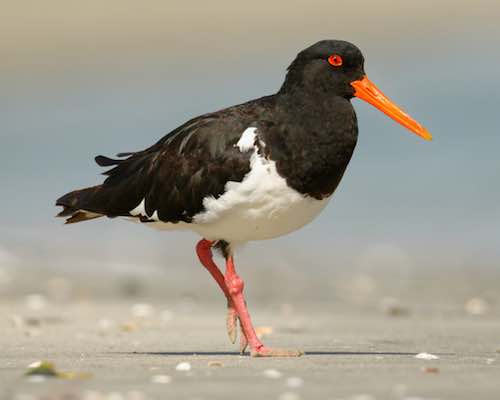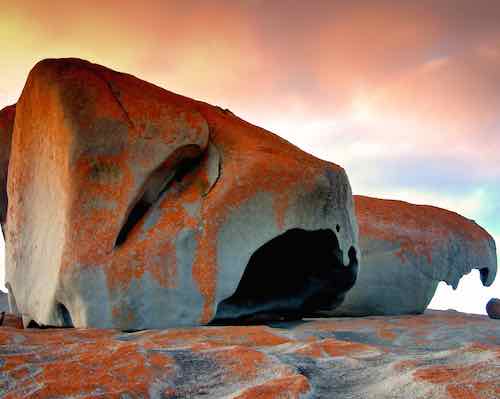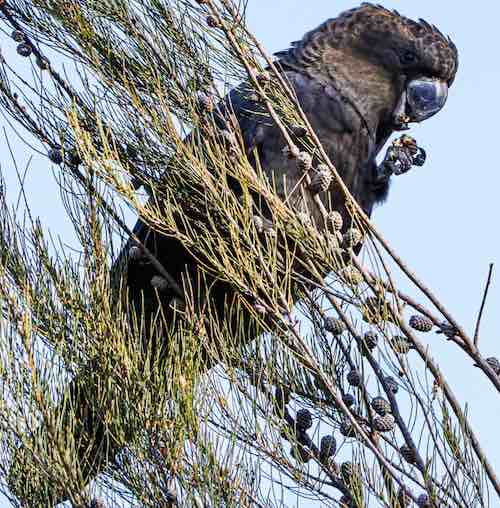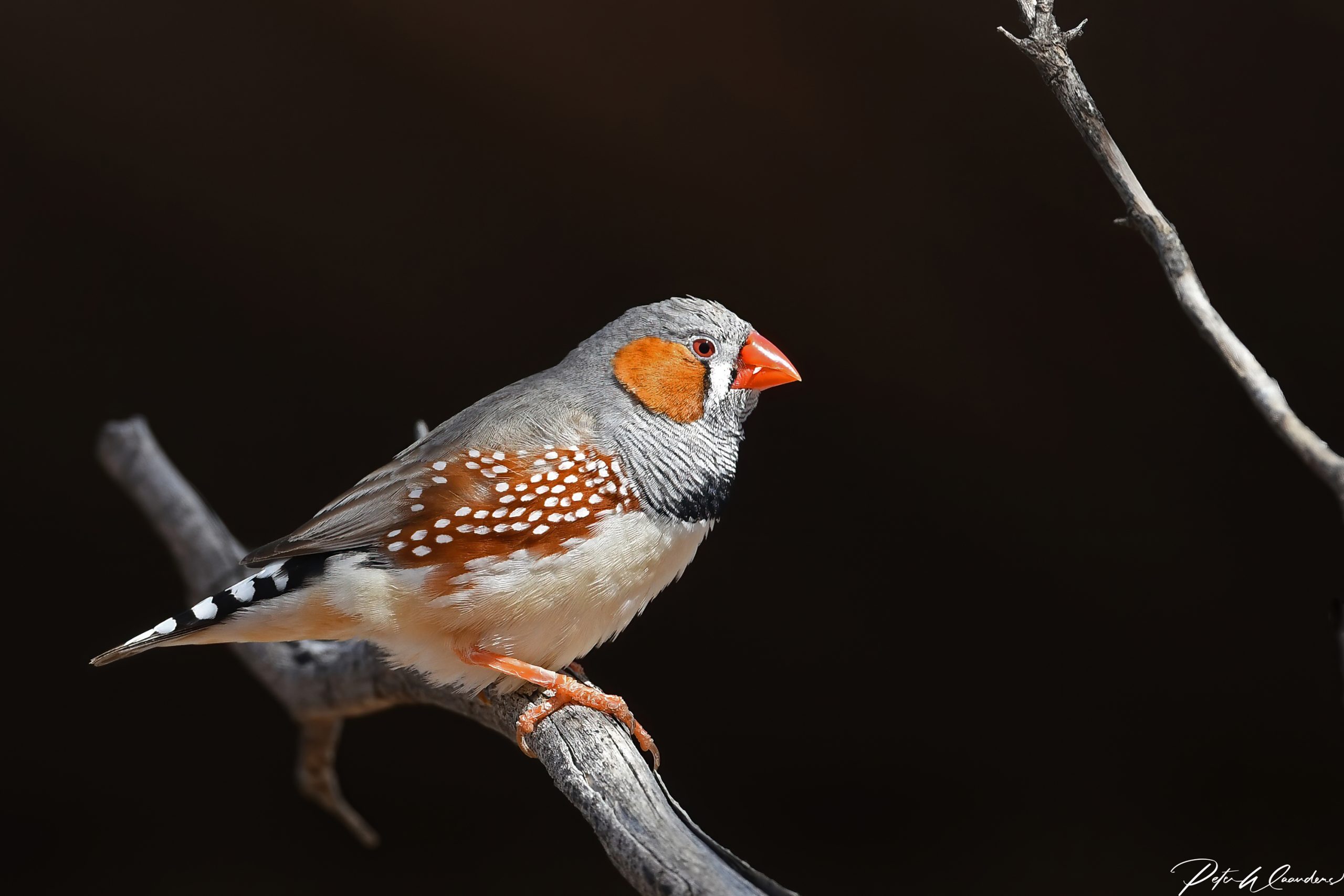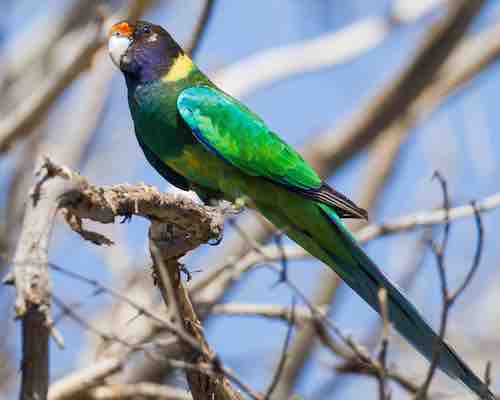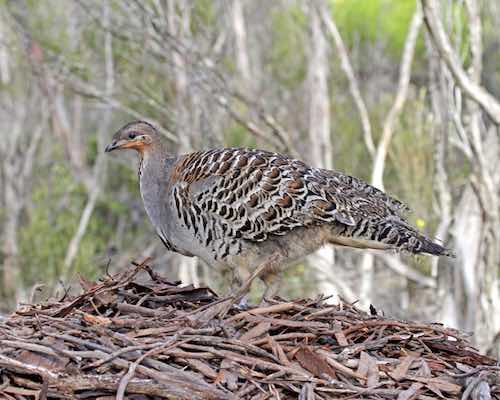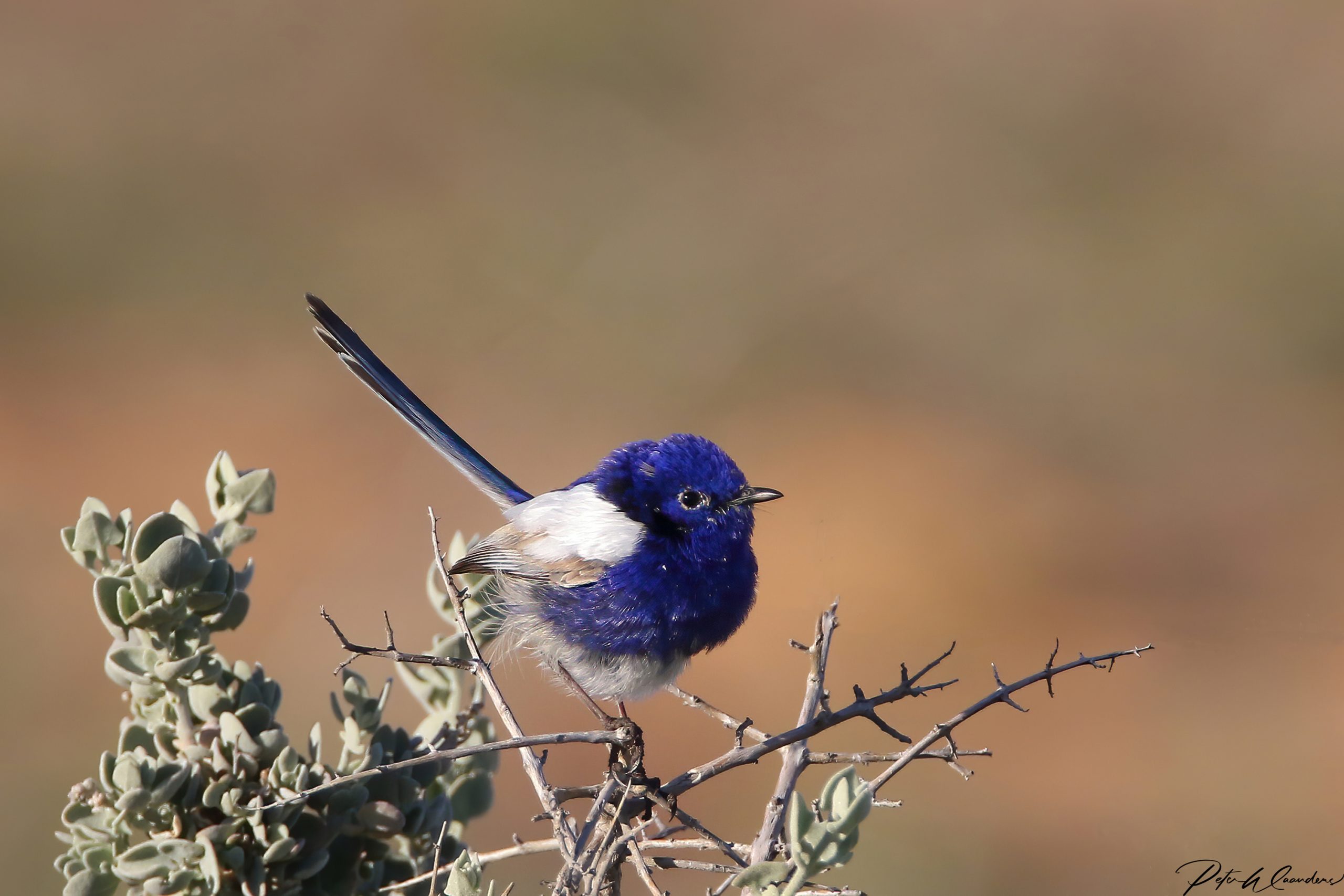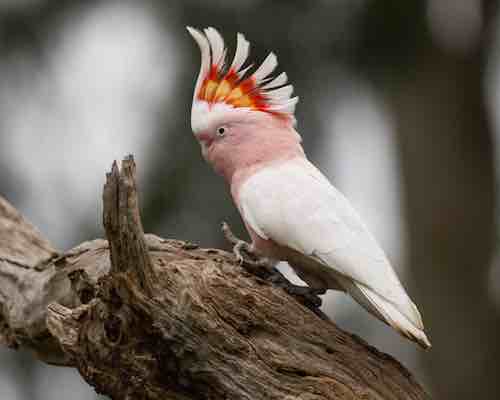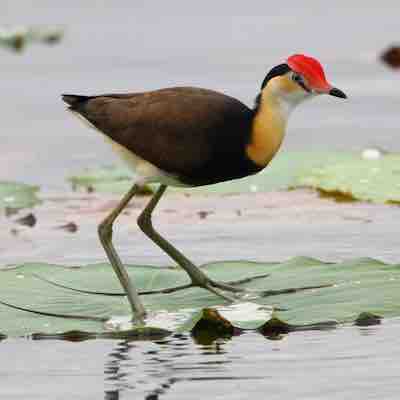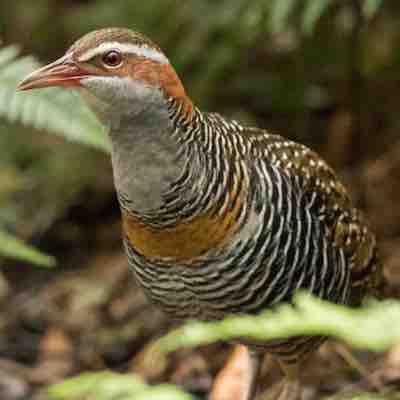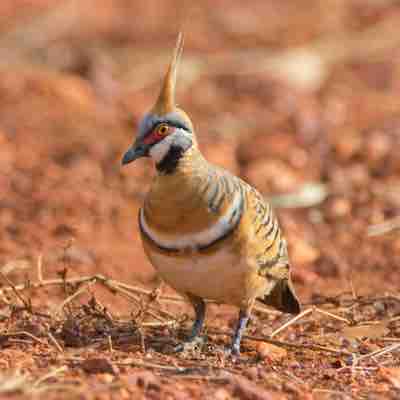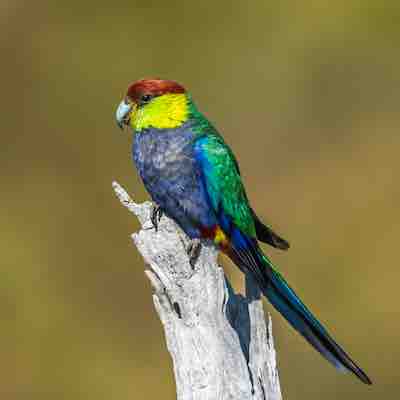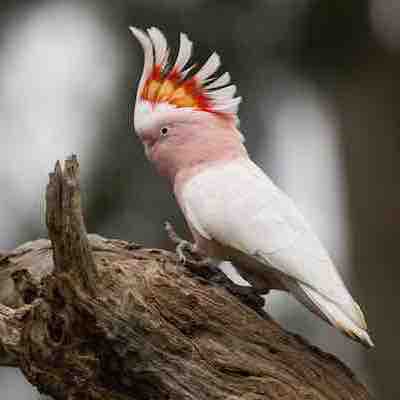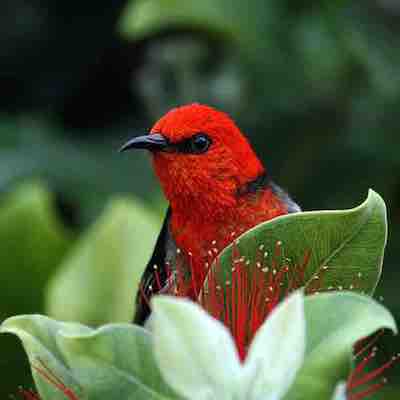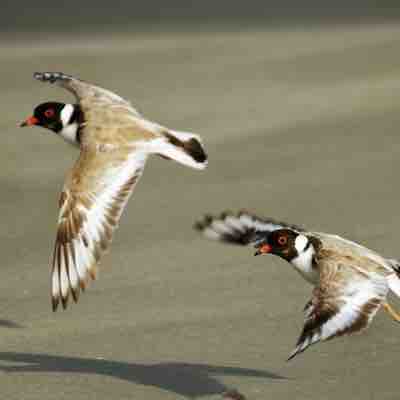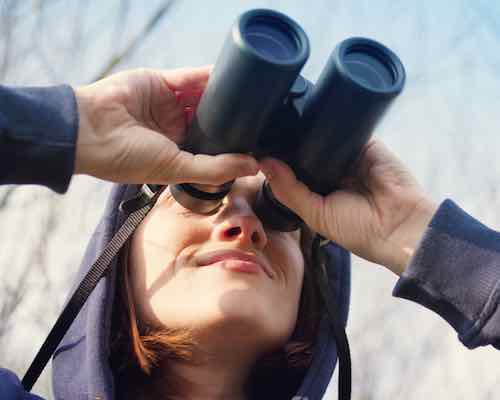Birding in South Australia
South Australia is home to around 450 bird species, making it a rich and rewarding destination for birdwatchers. The state spans a remarkable range of habitats – from the dry red deserts and dramatic outback ranges, to the lush forests of the Mt Lofty Ranges and the floodplains along the Murray River.
Other key birding regions include the mangroves and wetlands around Adelaide, the estuarine habitats of the Coorong, the semi-arid mallee scrublands, and the woodlands and tidal flats of Kangaroo Island. This diversity supports a broad mix of inland, coastal and woodland birds – including several species that are endemic to South Australia.
In recent years, more Australian and international visitors have begun to uncover the state’s best-kept birding secrets, making it an increasingly popular destination for birdwatching tours in southern Australia.
3 Day / 2 Night Kangaroo Island Birding Tour - from Adelaide
Day 1 – Adelaide to Kangaroo Island via the Fleurieu Peninsula
Collected early from Adelaide, you'll travel south through the Fleurieu Peninsula to Cape Jervis, watching out along the way for roadside birds such as Yellow-tailed Black Cockatoos in the Banksias and Adelaide Rosellas in the woodlands. From Cape Jervis, board the ferry to Kangaroo Island. The crossing takes around 45 minutes and can be productive for seabirds – Australasian Gannet, Flesh-footed Shearwater, Crested and Caspian Terns are regular, while albatrosses (especially Black-browed and Yellow-nosed) and Southern Giant Petrel may appear depending on the time of year and prevailing winds.
On arrival, begin exploring the island’s rich coastal and wetland habitats. Travel to Murray Lagoon and the surrounding back-blocks in search of species such as Wedge-tailed Eagle, Chestnut-breasted Shelduck, Musk Duck, Swamp Harrier, Grey Teal, Red-capped and Black-fronted Dotterel, and White-fronted Chat. Summer visits often yield a variety of migratory waders.
Continue on to Seal Bay Conservation Park, which offers a mix of coastal scrub and sandy beach habitat. As well as a close-up view of Australian Sea-lions, this area can produce sightings of Hooded Dotterel, Eastern Osprey, White-bellied Sea-Eagle, and a suite of bush birds. After lunch, head inland to Lathami Conservation Park where Sugar Gums and Drooping Sheoaks provide the critical nesting and feeding habitat for the island’s Glossy Black Cockatoos. Also present are Crimson Rosella (Kangaroo Island subspecies), Golden Whistler, Superb Fairy-wren and Beautiful Firetail, along with Tammar Wallaby and Kangaroo Island Kangaroo.
Late afternoon birding around Kingscote and the Cygnet River Estuary provides a mix of wetland and shorebirds, including various ducks, cormorants, Black Swan, and Australian Pelican. The final stop is American River – an excellent location for both woodland and estuarine birding. Glossy Black Cockatoo often feed in the sheoaks here, and the surrounding forest supports Galah, Scarlet Robin and Beautiful Firetail, while the tidal flats host waders and waterbirds, especially around Pelican Lagoon.
Check in at the Mercure Kangaroo Island Lodge, located on the shores of American River. It’s worth letting the staff know you’re a birder – Glossy Black Cockatoos often feed in the trees behind the lodge. You may also wish to book a nocturnal tour to see Little Penguins at Penneshaw, with chances for other night birds en route such as Southern Boobook, Barn Owl and Bush Stone-curlew.
Day 2 – Flinders Chase National Park
Optional pre-breakfast walk in the nearby Sheoak and Sugar Gum woodland, and along the mudflats fringing the American River foreshore. This is a good time to see local specialties including Glossy Black Cockatoo, Beautiful Firetail, Eastern Spinebill and Pied and Black-faced Cormorants feeding offshore.
After breakfast, depart for Duck Lagoon on the Cygnet River, a picturesque freshwater site lined with enormous Red Gums. This site often attracts Freckled Duck (particularly in spring), and is home to Pacific Black Duck, Hardhead, and an array of honeyeaters, thornbills and pardalotes.
From here, the day’s focus shifts westwards to Flinders Chase National Park. The journey west offers more chances for Yellow-tailed Black Cockatoo and pastures around Rocky River often hold Cape Barren Geese. Around Cape du Couedic, Crested, Caspian and Fairy Terns can be seen offshore, and depending on season, Short-tailed Shearwaters may be passing on migration. In recent years, Antarctic and White-fronted Terns have also been recorded here.
Nearby, the iconic granite domes of Remarkable Rocks are surrounded by coastal heath – ideal habitat for Western Whipbird, Southern Emu-wren and Tawny-crowned Honeyeater. The rocky tors are also favoured perches for Nankeen Kestrel and Australian Raven. Return to American River for a second night.
Day 3 – Eastern Wetlands and Return to Adelaide
After breakfast, explore a few remaining eastern sites before the ferry departure. Depending on recent conditions and seasonal activity, you may return to the Cygnet River Estuary, revisit American River, or explore coastal scrub near Penneshaw for the local White-browed Scrubwren and Singing Honeyeater.
Stop in at Brenton or Baudin Beach for final shorebird opportunities – Sooty Oystercatcher, Ruddy Turnstone, and Pacific Gull are all possible here.
Return by ferry to Cape Jervis and continue to Adelaide, arriving in the late afternoon.
Important Information
Private tour – departs any day, subject to availability of birding guide.
Tour Code: BA2KI
To Book or Enquire: Email (Please include Tour Code)
6 Day / 5 Night Gluepot and Flinders Ranges Birding Tour
This birding tour covers a broad sweep of South Australia’s inland habitats, from eucalypt woodlands and mallee scrub to saltbush plains and desert outwash. Expect a rich and varied species list – up to 200 birds – including some of the most sought-after endemics and dry-country specialists in the country.
Day 1 – Adelaide to Berri
Departing Adelaide this morning, we begin with some time in the Adelaide Hills. Key species here include Yellow-tailed Black Cockatoo, Adelaide Rosella, Yellow-faced, Crescent and White-naped Honeyeaters, White-throated Treecreeper, Flame Robin and Chestnut-rumped Heathwren. This is also one of the better places to see Koala in the wild.
Heading east, we drop into low dry eucalypt scrub where Southern Scrubrobin, Shy Heathwren, Purple-gaped Honeyeater and Painted Button-quail are all possible. We continue following the Murray River, where Purple-crowned Lorikeet is regular, and a variety of wetlands may produce Cape Barren Goose, Freckled Duck, and crakes including Baillon’s, Spotless and Australian Spotted, along with Little Grassbird and Golden-headed Cisticola.
Overnight in Berri.
Day 2 – Gluepot Reserve
We leave early for a full day at BirdLife Australia’s renowned Gluepot Reserve, arriving shortly before sunrise. This is the best place in the country to search for the critically endangered Black-eared Miner. Other Gluepot specialities include Malleefowl, Red-lored Whistler, Gilbert’s Whistler, Hooded Robin, Chestnut Quail-thrush, Striated Grasswren, Southern Scrubrobin, White-browed Treecreeper and Shy Heathwren. Major Mitchell’s Cockatoo, Crested Bellbird, Splendid Fairy-wren and Striped Honeyeater are also possible.
We’ll also keep an eye out for Regent Parrots (subspecies monarchoides), which breed nearby, and for Gluepot’s impressive diversity of honeyeaters – up to ten species occur regularly.
Overnight in Berri.
Day 3 – Berri to the Flinders Ranges
Today is a long travel day – around 400 km northward – but we break it up with birding stops en route. We begin by visiting a known Regent Parrot breeding area, and search for semi-open country species like Redthroat, Black-eared Cuckoo, White-winged Triller and Australian Ringneck.
Once we reach the Flinders Ranges, we head into spinifex habitat to begin our search for the elusive Short-tailed Grasswren, and will likely see good numbers of macropods – Red Kangaroo, Euro and Western Grey Kangaroo are all common in this region.
Overnight at Wilpena Pound Resort.
Day 4 – Flinders Ranges to Mt Lyndhurst
We spend the early morning birding around the ranges, with further chances for Short-tailed Grasswren as well as Elegant Parrot and Grey-headed Honeyeater. We’ll also keep a lookout for the threatened Yellow-footed Rock-wallaby among the cliffs and gorges.
Later we push further north to the edge of the Strzelecki Desert, reaching Mt Lyndhurst Station by late afternoon. This is one of the few known sites for Chestnut-breasted Whiteface, a true South Australian endemic. Other key targets include Inland Dotterel, Cinnamon Quail-thrush, Thick-billed Grasswren, Chirruping Wedgebill and Rufous Fieldwren.
Overnight at the Lyndhurst Hotel, a typical outback pub.
Day 5 – Strzelecki Country
Today we venture deeper into the desert edge country beyond Lyndhurst. With luck, we may encounter nomadic desert species such as Budgerigar, Orange, Crimson and Gibber Chat, as well as Eyrean Grasswren. Rarer possibilities include Ground Cuckoo-shrike, Letter-winged Kite and Black-breasted Buzzard.
Overnight at the Lyndhurst Hotel, a typical outback pub.
Day 6 – Lyndhurst to Adelaide
We begin the journey south, covering nearly 700 km back to Adelaide, with strategic stops en route. Among our targets are White-winged Fairy-wren, Redthroat, Rufous Fieldwren, Chirruping Wedgebill, Slender-billed Thornbill and both Elegant and Blue-winged Parrot.
Time and tides permitting, we’ll stop at the saltfields near St Kilda for a final scan through the wader flocks. Banded Stilt is possible here, alongside Red-necked Avocet, Red-capped Plover and migrant shorebirds.
Return to Adelaide.
Important Information
Private tour – departs any day, subject to availability of birding guide.
Tour Code: BA6GF
To Book or Enquire: Email (Please include Tour Code)
7 Days / 6 Nights Self-Drive Birding Tour of the Coorong, Murray River and Gluepot Reserve – from Adelaide
This self-drive birding tour is a great way to see a wide range of species, a number of habitats, amazing scenery – and be independent! The tour itinerary includes important birding sites such as the Coorong National Park for a spectacular array of waterbirds and migratory waders (seasonal), and BirdLife Australia’s Gluepot Reserve for some rare endemic dry country species.
You’ll also travel alongside the beautiful Murray River. We’ll provide you with a bird list, and handy notes on where to look, and even put you in touch with local birders (subject to availability).
We will be happy to rearrange the itinerary in order to confirm the Gluepot Reserve Guided Birding Tour, if necessary, as this tour is always subject to availability.
Important Information
Private tour – departs any day, subject to availability of birding guide.
Tour Code: BA7SD
Ask us about accommodation options in Adelaide.
Enquire here for costs. Ask us about accommodation options in Adelaide.
Tip: Think about a 2-day extension to Kangaroo Island for pristine wilderness, bountiful wildlife, and delicious food!
Birding in other States & Territories of Australia
Top End
Birding
Comb Crested Jacana
Victoria
Birding
Buff-Banded Rail
Central Australia
Birding
Spinifex Pigeon
Western Australia
Birding
Red-capped Parrot
South Australia
Birding
Major Mitchell’s Cockatoo
Queensland
Birding
Scarlet Honeyeater
Tasmania
Birding


